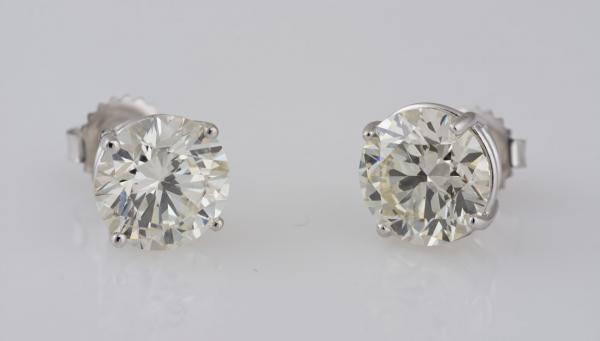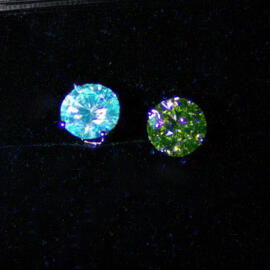Arden Jewelers Catches Undisclosed Lab Grown Diamond
The value of shopping with a gemologist
One of the things that sets us apart from other jewelers is our team of expert gemologists and full gem lab. In the past, we have talked about how a gemologist jewelry buyer can pay you more and how a gemologist can help you find the perfect diamond. Today, we’re sharing another way our gemologists are looking out for you.
We recently received a pair of 3 carat diamonds from a trusted and well known diamond wholesaler. As part of our standard evaluation our head Graduate Gemologist, Angelo tested and evaluated the diamonds. Using our brand new, state-of-the-art lab grown diamond tester was mostly just a matter of procedure as the stones were supposed to be natural. He was completely shocked when the tester flagged one of the two gems as a possible lab grown diamond. This stone was not laser engraved or disclosed as lab grown and to every standard gemological test is looked and acted exactly like a natural diamond. He ran the test a few more times and even confirmed on our secondary lab diamond tester, the stone was definitely lab grown.
Of course, we notified the wholesaler right away who was likely just as much a victim in this situation as we would have been. The stone was returned, and the wholesaler will begin a thorough investigation of their supply chain.
Now, lab grown diamonds are not a bad thing in and of themselves. We even carry a line of them called Balance, and they are a great way to save money compared to natural diamonds. It’s the undisclosed lab grown diamonds (like the one we found) that are the problem. These gems are worth less than their natural counterparts, and we consider it part of our job to protect our clients from being sold one. If you want to learn more about lab grown diamonds, check out our series of informational articles on them.
Without both the intensive training required to become a GIA Graduate Gemologist and the extensive tools available in our gem lab we could not have recognized this stone as a lab grown diamond. It’s one more way that we are working for our clients, and it’s one more reason why shopping with a real gemologist is the smart choice.
If you have any questions or you are looking for a new diamond, please feel free to reach out to us. We would be happy to talk with you.


What about the mounting that the “found-out” stone was mounted on? Was that a true silver or gold mounting?
Hi Roberta, good question. It was a true, 14k gold mounting just like the other one in the pair.
Interesting article
Thanks Janice, I’m glad you liked it.